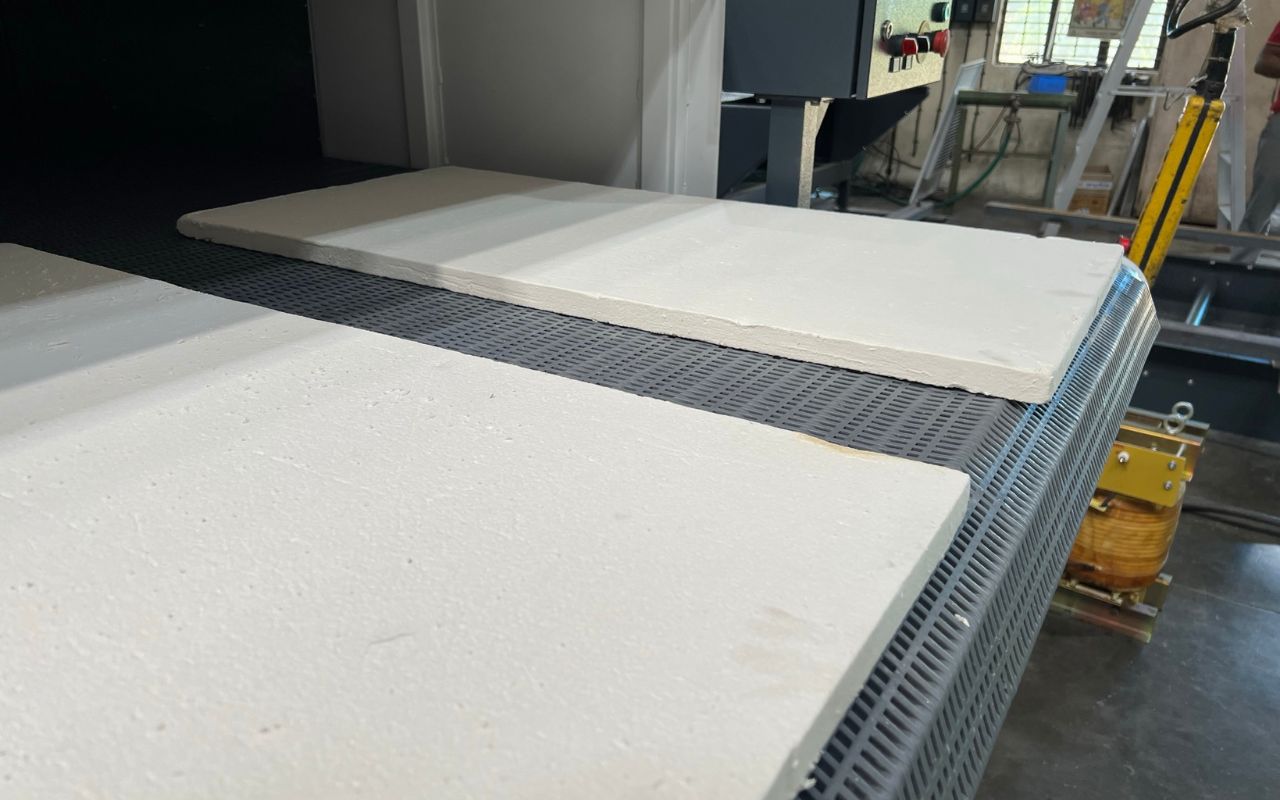Radio Frequency Dryers for ceramics and thermally insulating materials
RF drying revolutionizes ceramic drying with its numerous advantages. First, RF drying ensures uniform drying by using electromagnetic energy that penetrates deep into the material, resulting in consistent heat distribution and high-quality ceramics. Second, it significantly reduces drying times compared to traditional methods, leading to faster production cycles, cost savings, and improved overall efficiency. With RF drying, a complete drying cycle can be as short as 30 minutes (reducing moisture down from a 100% of the dry weight to as low as 1% of the dry weight). RF drying also minimizes cracking and shrinkage in ceramics like fiber boards, paper, and thermal insulators by efficiently removing moisture from the inside out.
By directly transferring energy to the material, RF drying reduces energy consumption, resulting in lower production costs and a reduced carbon footprint. Moreover, RF drying for ceramics offers versatility and control as manufacturers can adjust the frequency and intensity of the electromagnetic energy to meet the specific drying requirements of different ceramics. This ensures optimal drying conditions and consistent, high-quality results.
Technology Advantages
- Uniform drying: RF drying ensures uniform and consistent drying throughout the entire material. The electromagnetic energy used in RF drying penetrates deep into the material, allowing for even heat distribution. This helps to prevent the formation of moisture gradients, which can lead to uneven drying and potential defects. As a result, ceramic fiber boards, ceramic paper, and thermal insulators dried using RF technology exhibit better quality and performance.
- Faster drying times: RF drying is known for its rapid drying capabilities. By efficiently transferring heat to the material’s interior, RF drying significantly reduces drying time compared to conventional methods. This not only increases production efficiency but also reduces energy consumption and costs associated with longer drying cycles.
- Reduced cracking and shrinkage: Ceramic materials, especially fiber boards and paper, are prone to cracking, shrinkage & yellowing during the drying process. RF drying mitigates these issues by drying the material from the inside out. By evenly and gently removing moisture, RF drying minimizes the formation of stresses and strains that can cause cracking and shrinkage. This results in improved dimensional stability and reduced material waste.
- Energy efficiency: RF drying is an energy-efficient process. Its ability to quickly and directly transfer energy to the material reduces the overall energy consumption required for drying. As a result, ceramic manufacturers can save on energy costs and reduce their carbon footprint.
- Versatility and control: RF drying offers flexibility and precise control over the drying process. Manufacturers can adjust the frequency and intensity of the electromagnetic waves to tailor the drying parameters to the specific requirements of ceramic fiber boards, ceramic paper, and thermal insulators. This adaptability ensures optimal drying conditions and allows for consistent, high-quality results.
Strayfield Advantages
- Highest energy efficiency in the industry, minimizing operational costs
- Filtered Oscillator design adhering to EN55011 and CE compliance standards
- Double electrode balanced output, reducing RF emissions and improving efficiency
- Automatically adjusting electrodes for controlled power and unmatched arc suppression
- Dual Extraction Design for effective moisture removal
- Staggered electrodes for uniform and gentle drying, ensuring product quality
Dryers For

Ceramic shapes

Insulators

Ceramic Fiber Boards
